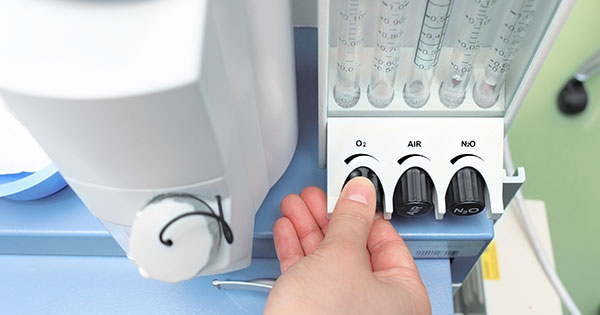Nitrous Oxide (known as laughing gas in some circles and N2O in others) is a colourless, non-flammable, slightly sweet-smelling gas. It’s also on the World Health Organization’s list of essential medicines.
In dentistry, nitrous oxide was first used in 1844 in Hartford, CT, by Dr. Horace Wells, and fully accepted into practice by 1870 as an effective way to reduce anxiety associated with visiting the dentist.
Today, nitrous oxide is used in most dental offices as a sedative agent.
The three benefits of Nitrous Oxide
- Anxiolytic — this means it reduces anxiety. The benefit to the patients is obvious, but there’s a benefit to the dentist as well: the less anxiety you have, the looser your muscles are, including your jaw muscle. This makes it easier for dentists to perform their work effectively and safely.
- Analgesic — this means it can reduce any discomfort that you might experience during the appointment.
- Euphoric — this means it makes you feel all tingly and giggly (hence the laughing gas moniker). It allows patients to divert their attention from the dental procedure.
How Nitrous Oxide is administered
First, we’ll fit you with the mask and make sure it’s airtight. Unlike a traditional gas mask, this one fits over your nose only (for obvious reasons). We’ll then start by giving you oxygen, and slowly introduce the nitrous oxide. We’ll ask you to breathe through your nose. You may begin to smell the nitrous, then you’ll start to get that tingly feeling in your face, which will quickly permeate down through your body.
When the procedure is done, your dentist will replace the flow of nitrous oxide with regular oxygen. This will reverse the effects of the nitrous oxide quickly, and you’ll leave the office as if nothing happened.
At your next appointment, feel free to ask us anything you’d like to know about nitrous oxide.








